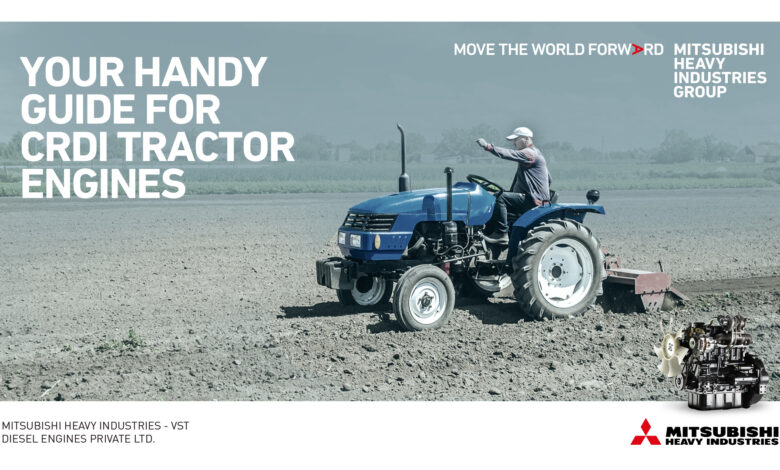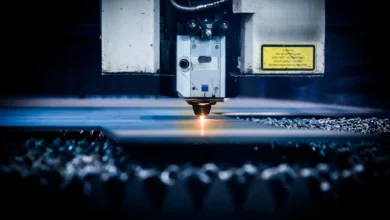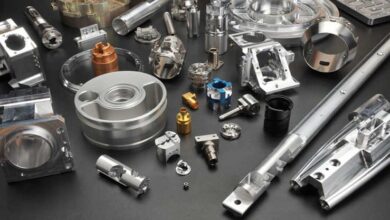Your Handy Guide for CRDI Tractor Engines

Over time, we have realized the fact that to sustain more longevity, it is important to evolve. This ever-evolving world demands advancement, and hence, in every sector, humans have evolved.
Even in the world of agriculture, evolution plays a vital role, and hence, technological advancements have revolutionized farming practices and equipment. On the long list of technological advancements and developments in diesel engine for agriculture, one of the standout innovations in the realm of tractor engines is the Common Rail Direct Injection (CRDI) technology.
CRDI tractor diesel engines have become the driving force behind modern farming, offering efficiency, power, and environmental benefits that were once unimaginable. In this blog, we will delve into the world of CRDI tractor engines, understand them, explore their advantages, and uncover the magic behind their operation.
What is CRDI?
Let’s start with the common question and understand some basics about CRDI. CRDI stands for Common Rail Direct Injection, it is a modern fuel injection technology used in engines, including those powering tractors. When we look at it from a historical view, Robert Huber developed the first prototype of common rail system in 1960s. Then, Dr. Marco Ganser further developed the technology for the next level. In short, we can give credit to Rober Huber and Dr. Marco Ganser for developing this technology. However, the first usage of a production vehicle began in Japan in the mid-1990s.
It represents a significant departure from traditional fuel injection methods. In a CRDI system, fuel is delivered to the engine’s cylinders at extremely high pressures through a common rail, which is a high-pressure fuel line. The fuel is then precisely injected into cylinders through injectors.
Unlike conventional tractor engines that rely on mechanical injectors, CRDI tractor engines utilize advanced electronic control units (ECUs) to precisely manage the timing and quantity of fuel injection. This precise control ensures that the engine operates at its optimal efficiency and power output, regardless of varying load conditions.
What are the components of CRDI engines?
After knowing the basics about CRDI diesel engine for agriculture tractors, let’s take a further dive and learn about the components of CRDI tractor diesel engines. The CRDI engines have the following components present:
- Fuel Tank
- Accumulator
- High-pressure relief valve
- Fuel filter
- Fuel pump
- Fuel temperature sensor
- Engine control unit (ECU)
- Injectors
- High-pressure piston pump
- Distribution pipe (rail)
- Rail pressure sensor
- Other sensors
The Working of CRDI Engine
The operation of a CRDI tractor engine is a well-orchestrated symphony of electronic and mechanical components working in harmony. Here’s a simplified breakdown of how it all comes together:
- Tractor engine fuel injection is a precise, multistep procedure. Initially, fuel is drawn from the tank and pressurized significantly by the fuel pump. This highly pressurized fuel is stored in the common rail, ready for injection. Sensors continuously monitor engine conditions, including speed, load, temperature, and pressure, transmitting data to the Engine Control Unit (ECU). The ECU processes this information to calculate the exact timing and amount of fuel required for current engine conditions.
- Next, the ECU signals injectors, which open and close with exceptional accuracy, delivering fuel directly into the combustion chamber at the optimal moment and volume. The ignited fuel-air mixture creates controlled explosions, generating power for the tractor. Real-time feedback from pressure sensors enables the ECU to fine-tune combustion, ensuring efficiency and performance. This meticulous process is essential for modern tractor engines.
Advantages Of Using CRDI Tractor Engines
The adoption of CRDI technology in tractor engines has ushered in a host of advantages that benefit both farmers and the environment:
- Increased Fuel Efficiency: CRDI engines optimize fuel combustion, leading to significantly improved fuel efficiency. Farmers can achieve more work with less fuel, reducing operational costs.
- Enhanced Power and Torque: CRDI technology increases the power and torque output of tractor engines. This means that tractors can handle heavier loads and more demanding tasks, making farming operations more productive.
- Lower Emissions: CRDI tractor engines produce fewer harmful emissions, helping to mitigate the environmental impact of agriculture. This is especially important as global concerns about air quality and greenhouse gas emissions continue to grow.
- Reduced Noise and Vibration: CRDI engines tend to be quieter and produce less vibration compared to their older counterparts. This contributes to a more comfortable and less fatiguing working environment for tractor operators.
- Improved Cold Starting: CRDI engines are more reliable in cold weather conditions, as they provide better control over fuel delivery during startup.
- Adaptable to Varying Conditions: CRDI technology ensures consistent engine performance across a wide range of operating conditions, from plowing fields to pulling heavy loads.
- Longer Engine Life: Precise fuel management in CRDI engines can lead to less wear and tear on engine components, potentially extending the engine’s lifespan.
Towards The End
CRDI tractor engines represent a leap forward in agricultural technology. With their ability to deliver improved fuel efficiency, increased power, reduced emissions, and smoother operation, they have become an essential component of modern farming. As the agricultural industry continues to evolve, CRDI technology will play a pivotal role in meeting the growing demands for food production while also reducing its environmental footprint. Various diesel tractor engine manufacturers are looking to tap into this opportunity, providing customers with various options. These diesel engines for agriculture are not just powering tractors; they are driving the future of farming.





